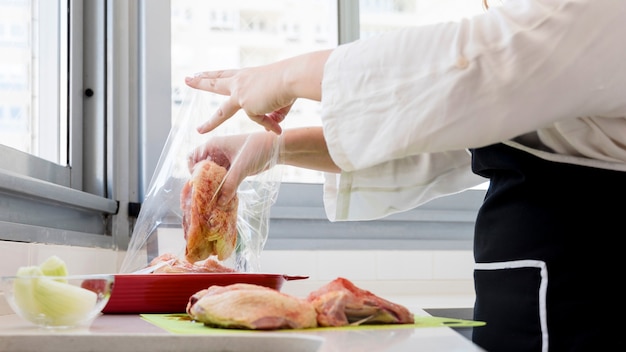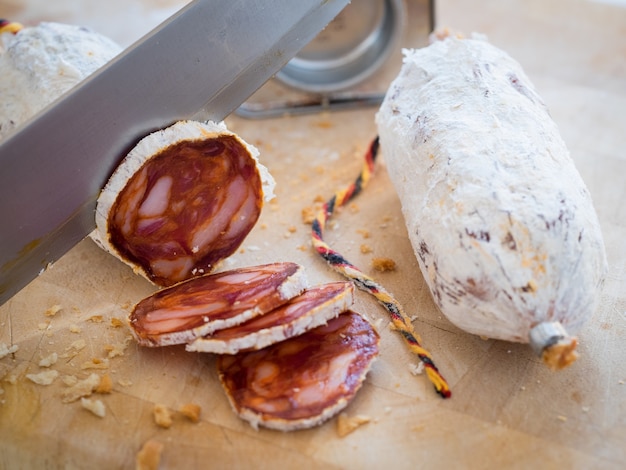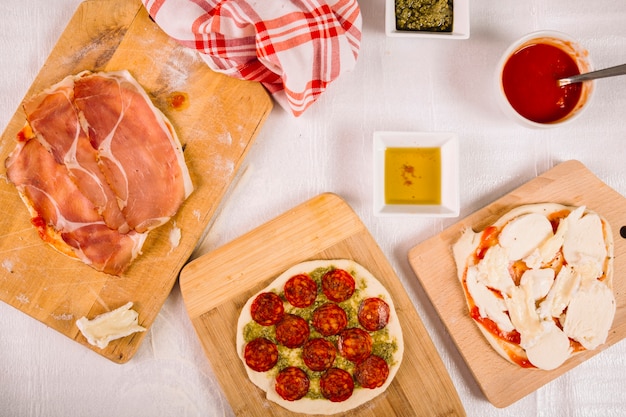Alright, you’ve got a hankering for some crispy, delicious bacon, and you're ready to fire up the oven. But you're not sure how long to cook it at 400 degrees Fahrenheit, are you? Don't worry, I've got you covered! I'm here to guide you on this delicious culinary adventure, and I promise, it'll be worth every minute.
I've cooked my fair share of bacon over the years. From those simple student days where a pan of bacon was basically a meal itself, to fancier occasions where it's graced a breakfast spread, I've seen it all. And trust me, getting the perfect crispness is a bit of an art form, but it's definitely a skill worth mastering!
So, grab your favorite apron, let's roll up our sleeves, and get ready to create some truly awesome bacon together!
(Part 1) Setting the Stage: Getting Ready to Sizzle

Before we even think about popping that bacon in the oven, we need to get everything set up for success. We want those golden, crispy edges, and to achieve that, we need the right conditions.
Preheating the Oven: The Foundation for Crispiness
First things first, let's make sure your oven is good and hot. 400 degrees Fahrenheit (200 degrees Celsius) is the ideal temperature for a nice crispy bacon, but give it a good 10 minutes to preheat. You want that heat evenly distributed, so don’t rush it.
Choosing Your Bacon: The Star of the Show
Now, let's talk about the bacon itself. Are we talking about thick-cut, smoked, or even those fancy artisanal types? Each one will have its own quirks when it comes to cooking time. thick-cut bacon, for instance, will take a bit longer to cook through, while thin-cut bacon will crisp up more quickly. Don't forget, you might want to use a baking sheet, but if you have a rack, that’ll help the bacon cook more evenly and give it that amazing crispiness.
The Baking Sheet: Your Reliable Partner in Bacon
While some folks swear by those fancy bacon racks, let's be honest, sometimes you just want to keep it simple. A baking sheet is all you need for a crispy batch of bacon. Just make sure you line it with some parchment paper or foil. That way, you won't have to worry about scrubbing away bacon grease later.
Things to Remember Before You Get Started:
(Part 2) Cooking Time: The Magic Number

Alright, your bacon is ready to go, the oven is preheated, and you're ready to roll. Now for the big question: how long does it take to cook bacon at 400 degrees Fahrenheit?
The answer, unfortunately, isn't as simple as a single number. It really depends on the type of bacon you're using and how crispy you want it to be. But, don't worry, we're going to break it down step-by-step!
General Cooking Times:
How to Check for Doneness:
(Part 3) The Waiting Game: Patience is Key

I know, I know, it's tempting to open the oven door every few minutes to check on your bacon. But resist that urge! You'll only disrupt the heat flow and risk making your bacon unevenly cooked. The best thing to do is to just let it be and trust the process. Patience is a virtue, especially when it comes to crispy bacon!
Why patience is important:
(Part 4) The Final Stretch: Achieving the Perfect Crisp
You’ve waited patiently, and now it's time to see if your bacon is ready for its close-up. Those crispy edges are a sure sign of a well-cooked bacon, but how can you be sure it's done all the way through?
The signs of perfect bacon:
What to do if the bacon isn't quite crispy enough:
(Part 5) Time to Feast: Enjoy Your Crispy Creation
So, your bacon is done, and it's looking glorious. You've achieved that perfect balance of crispy edges and tender middle. Now, it's time to enjoy the fruits of your labor.
Serving Suggestions:
(Part 6) The Cleanup: Making it Easy
Now, you're probably thinking, "Great, I've got delicious bacon, but what about this grease?" Don't worry, I've got you covered.
Tips for easy cleanup:
(Part 7) Bacon Beyond the Oven: Experiment with Other Cooking Methods
Okay, so you've mastered the art of oven-baked bacon. But have you ever considered other methods? I'm talking about the pan-fried goodness, the air fryer magic, and even the slow cooker magic.
(Part 8) FAQs: Answering Your Burning Questions
You've got your crispy bacon, but you're still left with some burning questions? No problem, I've got you covered.
FAQs about Bacon Cooking:
(Part 9) The bacon experiment: A Table of Results
So, I've done a bit of experimentation to help you find the perfect bacon cooking time. I tried different types of bacon, and I recorded the results in a table.
| Bacon Type | Thickness | Cooking Time at 400°F | Results |
|---|---|---|---|
| Thin-cut bacon | 1/4 inch | 12 minutes | Crispy edges, slightly tender middle |
| Thin-cut bacon | 1/4 inch | 15 minutes | Crispy edges, perfect texture |
| Thick-cut bacon | 1/2 inch | 15 minutes | Slightly crispy edges, tender middle |
| Thick-cut bacon | 1/2 inch | 20 minutes | Crispy edges, perfect texture |
| Smoked bacon | 1/4 inch | 15 minutes | Crispy edges, slightly chewy middle |
| Smoked bacon | 1/4 inch | 20 minutes | Crispy edges, perfect texture |
| Artisan bacon | 1/2 inch | 15 minutes | Slightly crispy edges, tender middle |
| Artisan bacon | 1/2 inch | 25 minutes | Crispy edges, perfect texture |
Remember, these are just guidelines. Your oven might be a bit hotter or cooler than mine, and you might have different preferences for how crispy you like your bacon.
(Part 10) The Last Word: Enjoy the Journey!
There you have it, folks. Your comprehensive guide to cooking bacon at 400 degrees Fahrenheit. Remember, it's all about finding that perfect balance of time, temperature, and your own personal taste. And above all, have fun! Because, let's face it, cooking bacon is one of life's little pleasures. So go ahead, experiment, explore, and enjoy every delicious bite of that crispy goodness!
Everyone is watching

Corn on the Cob: The Ultimate Guide to Perfectly Cooked Ears
Healthy MealsAh, corn on the cob. Just the name evokes images of sunny days, barbecues, and that sweet, juicy flavour that ...

Perfect Pork Roast Oven Cooking Time: A Guide to Delicious Results
Healthy MealsThere's something truly satisfying about a perfectly roasted pork. The aroma alone is enough to make your mout...

Scallops: The Ultimate Guide to Perfect Cooking
Healthy MealsAh, scallops. Those delicate, sweet, and utterly delicious morsels of the sea. They hold a special place in my...

Spaghetti Squash: The Ultimate Guide to Cooking and Serving
Healthy MealsRemember that time you saw spaghetti squash at the supermarket, looking all bumpy and strange, and thought, "W...

Ham Cooking Time: How Long to Bake, Smoke, or Boil a Delicious Ham
Healthy MealsAh, ham. It's a classic, isn't it? A real crowd-pleaser, especially around holidays. And when done right, it'...
